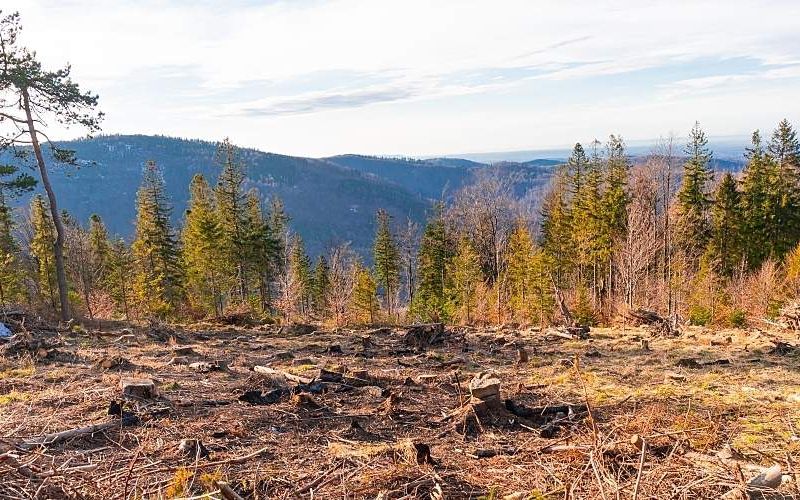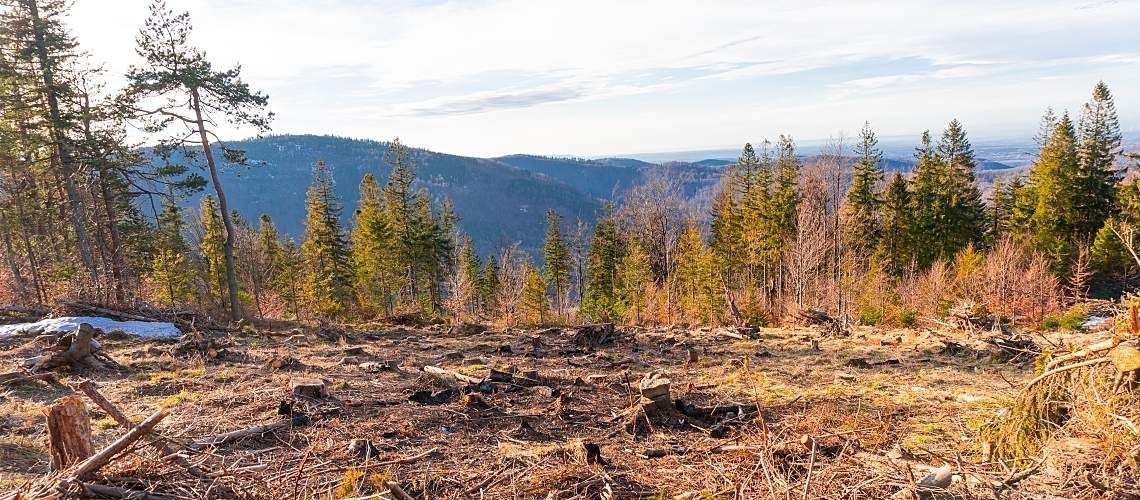Clear-Cutting Forests Could Threaten Water Quality


A recent U.S. Department of Agriculture Forest Service study revealed that about 90% of the West depends on streams, lakes, and rivers in national forests and grasslands for the water used to drink, cook, and bathe. Often, that water is transported hundreds of miles from its origin to the tap. Although forests typically provide the cleanest, most stable water supply of any type of land, that's true only if they're properly managed.
The logging practice known as clear-cutting raises water quality concerns. With clear-cutting, loggers remove most of the trees from acres of land, leaving few or none standing. This practice often degrades water quality and the aquatic environment, requiring additional testing and treatment to protect community health.
Let's look closer at surface water in the West and the impact of forest practices on the quality and quantity of water delivered to the population downstream.
Public Water Systems Rely on Forests
The USDA's Forest Service study includes measures of how much surface water is moved by pipe and canal networks to major cities nationwide. Some of the country's largest public water systems depend on Forest Service surface waters.
One example of this was outlined in the Oregon Capital Chronicle. Portland, Ore., relies on the Bull Run Watershed for more than 90% of its drinking water. The news outlet reported the Forest Service not only owns about 94% of this watershed 25 miles east of Portland, but also one-quarter of all the land in Oregon. Nationwide, the Forest Service manages 193 million acres of forests and grassland, with more than 80% in the West. In fact, more than 136 million people rely on surface water from these forested lands for some portion of their drinking water.
Studies on the impacts of forest practices can help water resource and forest managers develop plans to manage these vast and valuable lands as climate change, population growth, and development threaten water supplies. That's critical when summer brings drought conditions. Then, the number of trees of a certain age and the amount of logging in a watershed have an even greater effect on the volume of water coming out of a stream and its quality, according to OPB.

Water Needs and Clear-Cutting's Startling Effects
As population and food production increase and climate change creates uneven demand, the need for water is greater than ever. Since 1950, total annual water withdrawal in the United States has nearly doubled, along with the country's population, according to the Oregon Capital Chronicle.
Land and waters within Forest Service boundaries are used for various purposes, including mining, logging, and irrigation. But the agency is also charged with protecting and restoring forests to sustain and improve water resources.
The water quality impacts of clear-cutting range from diffuse pollution and sediment delivery to nutrient losses and carbon transport, according to Science Direct. Moving heavy equipment across the land increases soil disturbance and compaction. But removing every tree also increases erosion, resulting in water with greater soil, sediment, and turbidity levels—and a greater need for filtration and other treatments to achieve drinking water standards.
After clear-cutting, changes to the watershed include little vegetation in the overstory, which reduces rain and snow intercepted, as well as less evapotranspiration and nutrient uptake from the soil. Temperature variations also increase, as does the wind velocity across open areas.
Best Practices Mitigate Impacts of Harvest
Several best practices can reduce and prevent severe impacts on water quality. For example, buffers that establish a no-cut zone along streams can help protect quality if they're large enough, according to a study from the University of Washington.
But the typical 20-feet zone often isn't sufficient, and deforestation can allow herbicides and mud to wash into the water. The resulting turbidity adds to filtering costs and can create harmful byproducts when chlorine binds with organic matter, according to an article in Oregonlive. A 50-feet buffer offers greater protection.
In addition, low-impact techniques for working the land and logging in phases, where not all trees are cut at once, can also help protect water quality. More than 50 years ago, research in North Carolina showed that selective logging could improve the quality of water runoff. American Scientist notes that revenues earned can be used to maintain streams and protect the water supply.
That gives logging companies an opportunity to care for the watershed and ecosystem in addition to felling trees. Water testing and treatment are still critical to ensure the water delivered to citizens in the West remains safe and sufficient to meet their needs.




